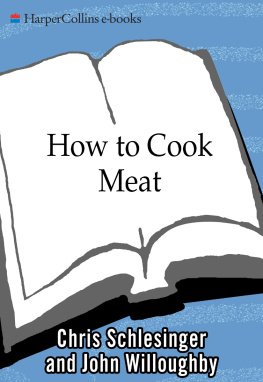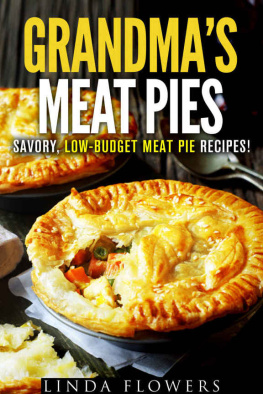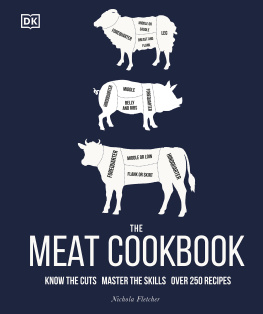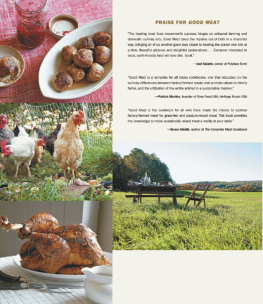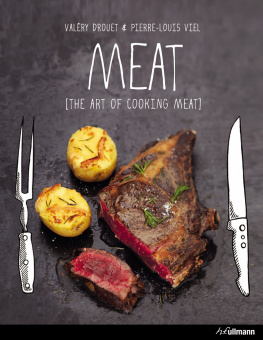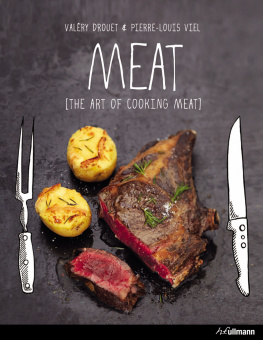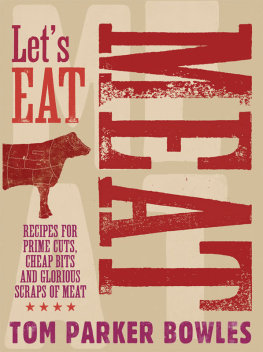As usual, there are more people who helped make this book than we can possibly thank, but we want to single out a few.
From Chris
Thanks to the staff at my restaurants for taking up the slack so I had the time to do this book. At the East Coast Grill, Id particularly like to thank Maureen Rubino, my general manager; her assistant, Erin; Owen Tilly, the chef; as well as Eric, Seth, Elmer, Amilcar, and all the rest of the staff. At the Back Eddy, my thanks to general manager Sal Liotta and chef Aaron DeRego along with Nigel, Brian, and the rest of the gang. Id also like to thank Jimmy Burke and Bob Kinkead, my pals, mentors, and colleagues through the years, for all the teaching, eating, drinking, and laughing. And finally thanks to my coauthor, Doc, for his ability, agility, and intestinal fortitude and for tolerating a sometimes petulant, sometimes confused, and always lazy partner. As usual, a pleasure and an honor.
From John (Doc)
Thanks to all of my colleagues at Cooks Illustrated magazine, and in particular Chris Kimball, Jack, Kay, Adam, Barbara, Amy, Dawn, Julia, India, Bridget, and Henrietta for their support and tolerance. Thanks to Mark Bittman for his ever-present comradeship and inspiration. And, of course, thanks to my coauthor, Chris, for his alacrity, perspicacity, all-around ebullience, and ability to put up with my irksome habits and occasionally alarmist nature. The pleasure and honor, truly, are mine.
From both of us
Our thanks to Nancy Kohl and Kirsten Mikalson, without whom this book would not existtheir hard work, diligence, and ability to tolerate ever-changing surface conditions on the road to completion were essential and guarantee them a bright future in this business; to Kay Rentschler, not only for her indispensable help in the conceptual formulation of this book but also for her expertise in the flavors of the Austro-Hungarian Empire; to our indefatigable agent Doe Coover, an evergreen source of inspiration and encouragement; to her colleague Frances, for always taking our calls cheerfully no matter how grumpy we might be; to Doug Bellow, Dana Van Gorder, Carl Taplin, Tom Huth, and in particular Michael Otten for testing and retesting our recipes in their home kitchens.
At HarperCollins, thank to our original editor, Justin Schwartz, for helping translate our eager enthusiasm into what we hope is a useful book; to the ultimate closer, Harriet Bell, for her drive and vision; to Adrian Zackheim for his support and his inspirational display of two-fisted eating at the East Coast Grill last February; to Leah Carlson-Stanisic for making a complicated concept into a clear and readable design; and to Judith Sutton for coralling our errors.
Thanks also to John Dewar, the worlds finest butcher, for his patient guidance at our early morning sessions; to Paul Derber, supplier of high-quality meats, for his lucid explanations; to Dr. Terry Dockerty and the National Cattlemens Beef Association for generously allowing us to use their expert photographs of various cuts of beef, pork, lamb, and veal; to the National Livestock and Meat Board for putting out clear, concise, and helpful guides that are worth their weight in gold to anyone who wants to know even more about meat; and to Dave Griffin of Texas A&M University for organizing and presenting the highly informative Beef 101 course.
Finally, thanks to our extended familyRick, Susan, Tommy, Lizzie, Steve, and Chriss wife, Marcy, for their unwavering love and friendship.
All THE MEAT THATS FIT to EAT
L ets face it, meat tastes great. From steaks to chops, ribs to roasts, it has a direct, hits-you-where-you-live appeal that cannot be denied.
So its no surprise that when we think of our favorite food experiences, meat usually played the major role. Eating that first super-flavorful fat-edged prime rib as a young boy was a culinary rite of passage. Then there was the first spit-roasted whole pig, the crackling-crisp skin contrasting beautifully with the rich, buttery, smoky tendrils of the inner meat. A roast leg of lamb, slathered with a paste of garlic, rosemary, and lemon juice, was the clearest memory of a childhood trip to Greece. And how many times have we celebrated a gorgeous summer day with a cold beer and a perfectly grilled double-thick T-bone steak, rich and juicy inside and charred just right on the outside?
Obviously, we love meat. And with this book, we want to share that love with you, to give you an even deeper appreciation of the flavor that you already savorbecause red meat is a bedrock part of our culinary heritage, a taste that is right down in our genes.
But were not blind to all the nutritional information that is going around today concerning red meat. We agree that the typical American diet probably includes too much of it. In fact, thats how this book got started in the first place. We were concerned about our own meat consumption and decided to try to make the meat we ate really count. This had the ironic effect of raising our appreciation and our dedication to proper preparation of meat. Once we gave up the lousy ham sandwiches and the fast-food burgers, we found ourselves becoming more enamored of not only roasts and steaks, but also some of the overlooked and less popular cuts. Pretty soon cuts like short ribs, veal breast, and fresh ham began to gain ground as new favorites.
When we started exploring meat in this way, it led us to both rediscovering some old classics and appreciating the way meat is used in other cultures, where the roasts and steaks of European-derived cuisines are almost unknown. This opened up a whole new world to us, and we want to share that world with you. We want to share the classic cuts, we want to share the international favorites, and we want to share the overlooked cuts, the unpolished gems of the meat world.
At the same time, we want to teach you how to cook every cut exactly right. Because if youre going to eat less meat, then its even more important that you derive maximum enjoyment from every experience.
Theres actually a lot to be said for red meat in a nutritional context too. It remains the single most nutrient-dense, efficient food delivery system available to human beings. It contains all the essential amino acids (those are the ones that our bodies need but cannot synthesize from other foods) and, more important, it contains each in exactly the proportion that our bodies require it. Red meat is also an unrivaled source of iron and crucial trace elements such as zinc and copper, along with vitamins B6 and B12. As for saturated fat, many cuts are leaner these days, and even within current nutritional guidelines you can eat ten ounces of lean red meat every day and not exceed the recommended fat intake.
Meat is also a core part of the human experience, intricately intertwined with our history as a species. Hunter-gatherers werent hunting for vegetables, after all, and the need to band together to hunt for meat was the primary motivation for the early social bonds that eventually created civilization. Anthropologists vary in their estimation as to whether the eating of meat represents humans desire to show their power over animals or to identify with them, but they all agree that it has a deep-seated relevance to our understanding of our place in the natural world.
As Americans, we are particularly meat-oriented, because our country has perhaps the most consummate carnivore history of all. Native Americans had always hunted and eaten meat, and European settlers took to the practice with a passion. In their native countries meat had for the most part been a privilege of wealth. But in this new land, game was astonishingly plentiful, and with the vast amount of land available, the new Americans began raising both cattle and hogs in large quantities. Europeans who visited colonial America consistently marveled at the amount of meat consumed by the average citizen. Like rice in much of Asia, meat became the center of our national dinner plate.

